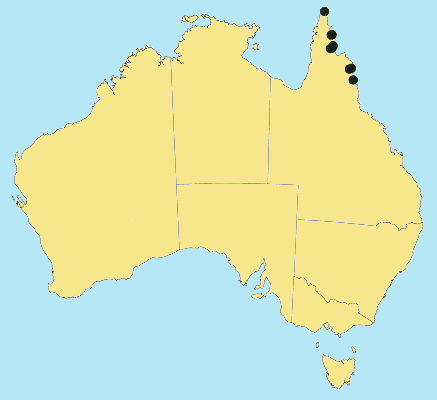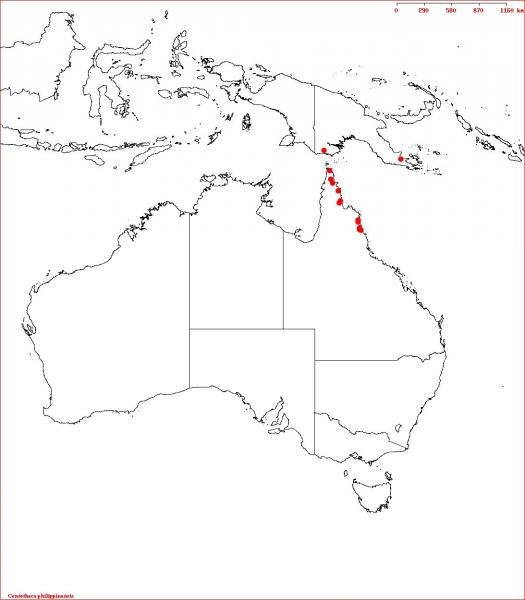Centotheca philippinensis (Merr.) Monod
de Froideville. Bull. Tokyo Sci. Mus. 18: 10 (1947).
Classification. (GPWG 2001) : Subfamily Centothecoideae. Tribe
Centotheceae.
Basionym and/or
Replacement Name: Ramosia
philippinensis Merr. Philipp. J. Sci. 11: 2 (1916).
Type of Basionym or
Protologue Information: HT: Ramos BS 23607, [Aug 1915], Philippines
(PNH+; IT: K, L).
Recent synonyms:
C. longilamina.
Key references
(books and floras): [2002] D.Sharp & B.K.Simon, AusGrass, Grasses of
Australia.
Habit.
Perennial. Culms erect or geniculately ascending, 21–100 cm tall. Mid-culm
internodes solid. Lateral branches branched. Ligule an eciliate membrane.
Leaf-blades linear or lanceolate, 2.5–15.5 cm long, 3–12 mm wide.
Inflorescence.
Inflorescence compound, a panicle. Panicle ovate, 4–20 cm long, contracted
about primary branches.
Spikelets.
Spikelets pedicelled. Fertile spikelets many flowered, with at least 2 fertile
florets, comprising 1–3 fertile floret(s), with a barren rachilla extension,
lanceolate, laterally compressed or terete, 4–8 mm long.
Glumes. Glumes
similar, similar to fertile lemma in texture. Lower glume lanceolate or
elliptic or ovate, herbaceous, keeled, 1-keeled, 3–5 -nerved. Upper glume
oblong, 3.1–3.8 mm long, herbaceous, keeled, 1-keeled, 3–5 -nerved.
Florets.
Fertile lemma 3.1–4.2 mm long, without keel, 5–7 -nerved. Lemma surface
glabrous or indumented. Lemma apex mucronate. Lodicules present. Anthers 2.
Continental Distribution:
Tropical Asia and Australasia.
Australian
Distribution: Queensland.
Queensland:
Cook.
Notes.
In northern Qld. Phillipines, New Guinea and Australia. Usually in forest
openings, near water, on the edge of creeks, rivers, swamps. Flowers May-July,
Sept.-Oct.



